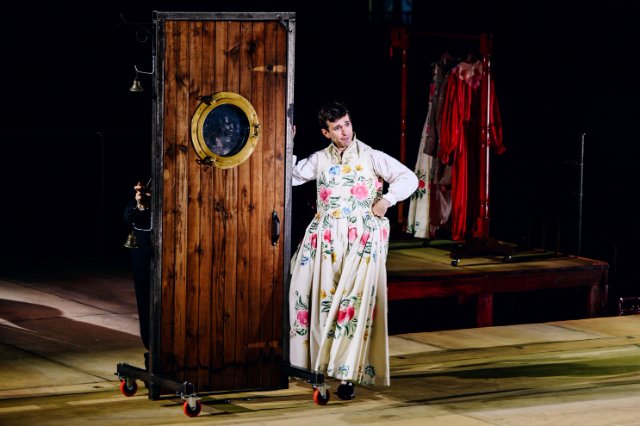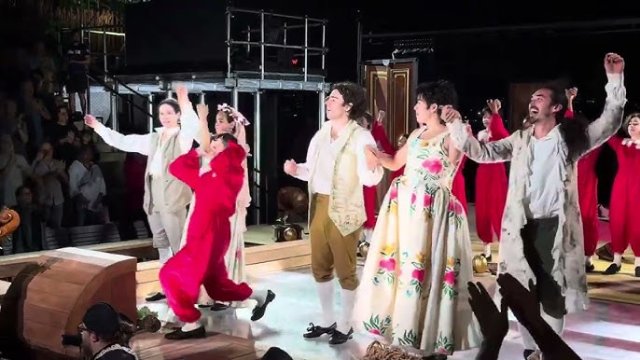Little Island Presents Marriage of FIgaro
Anthony Roth Costanzo is Gender Fluid
By: Susan Hall - Sep 07, 2024
The major event at New York’s Little Island this summer is an abbreviated version of Mozart’s Marriage of Figaro with all seven roles sung by premier countertenor Anthony Roth Costanzo. It will be performed through September 22. Zack Winokur produces.
An abbreviated version of Carmen by the singular director Peter Brook premiered in 1981. Carmen in its original form lasts for hours. Brook’s is abbreviated to an hour and a half. Four principal singing characters were featured. While Bizet fanatics may find the work unsatisfactory, modern audiences appreciate the beautiful music and the 90-minute time frame.
The Brook work added original dialogue. The Little Island Figaro breaks out of the opera to perform parts of the play on which it is based. Playwright Pierre-Augustin Caron de Beaumarchais survived by marrying rich women he portrayed so well in Figaro.
In the US, opera struggles for audiences. The amphitheater at Little Island was packed with people of all ages and colors. The month-long, five day a week performance schedule sold out immediately.
Costanzo’s range is remarkable. While the beauty of his voice is splendidly portrayed in the female solos, he growls and crackles a bit three and a half octaves below as Figaro and the Count. Cherubino’s mezzo fits perfectly.
There’s a joke about the demands of this interpretation. Here Costanzo creates an eighth role, himself, on a stretcher. He collapses under the new work’s pressures. In opera, only Andy Warhol has been shown on a hospital drip.
What is striking is the illusion of the displaced voice. All the characters are miming on stage as Costanzo sings their roles. They are actors not singers. Great opera singers often can’t act. It helps if they do. Now we have seven mimes, whose physicality is startling. Instantaneous costume changes both mask and celebrate gender fluidity, a major topic of our times.
Costanzo, joined by director Dustin Wills and music director Dan Schlosberg, discovered that we, the audience, will place the voice in the actors’ mouths even when it’s coming from Costanzo.
Recently playwright Lucas Hnath staged a solo production by Tony-winning actress Deirdre O'Connell. The effect of a real voice of a real human being inhabiting an actress, body to the voice, makes compelling theater. You can imagine Marni Nixon singing for Audrey Hepburn in My Fair Lady. Hepburn sings on film. Nixon stands in the studio recording the song to Hepburn's lip movements and gestures. Final adjustments are made by recording technicians. That process is off-screen.
The delicate matching process in Hnath’s play takes place live before our eyes. O'Connell takes the ventriloquist's dummy to a new level. No matter how much you love a taped voice, it is enhanced enormously when the voice is embodied.
Costanzo talks about singing ‘duet’ as disconcerting. He is singing one role on stage and drops a needle down on a recording of his own voice now displaced and singing with him.
Schlosberg’s arrangement of the score is brisk and full of rhythm. He adds a saxophone solo.
The setting in which the amphitheater, usually enclosed in Greece, opened up to the Hudson River and the setting sun beyond is like an expansive Santa Fe opera where the back of the stage reveals the Jemez mountains. A universe is created, perfect for operatic performance.
When Beaumarchais contributed to the financing of the American Revolution, he must have anticipated this thoroughly engaging performance of his play turned into opera. Frankly, Mozart would have composed for movies if he were alive today. He might well have created this version of Figaro.


